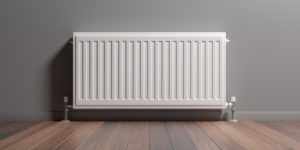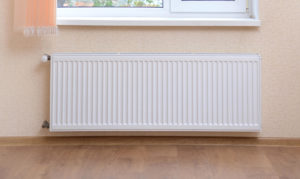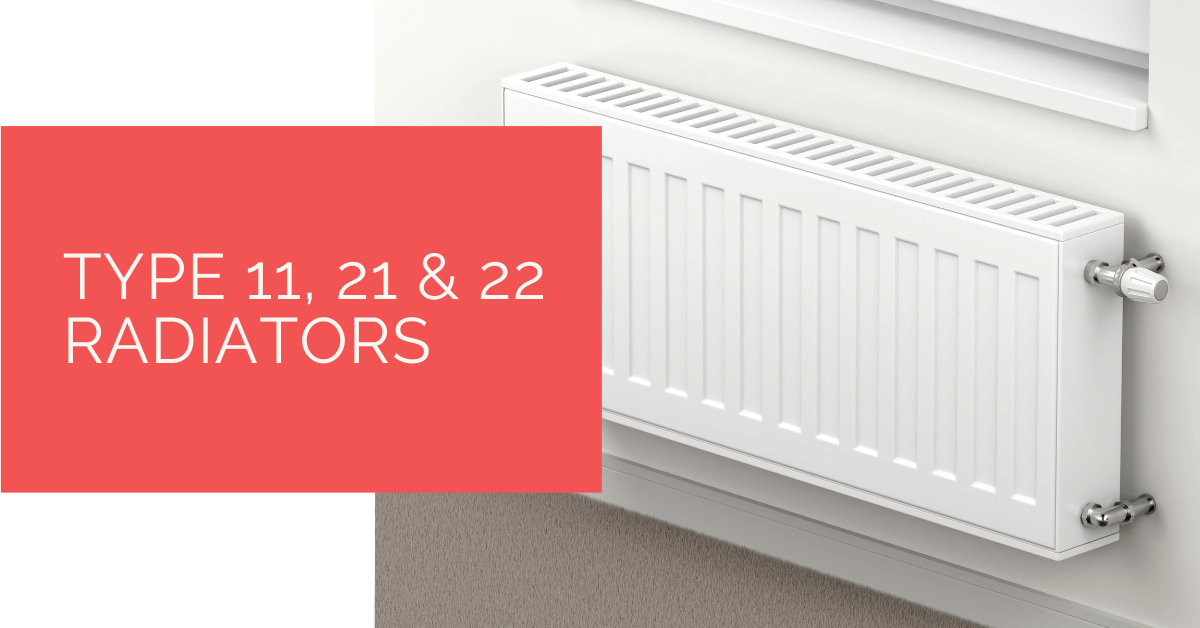Radiators come in different shapes and forms! Some have complex pipe networks, while others are more compact, using a different heating technique other than solely running hot water through some tubes. The compact models work by convection; to no one’s surprise, they’re the most popular radiator type in the UK.
So, if you’re in the market for a convection radiator, you’ve probably encountered jargon like type 11, 21, and 22 radiators. Unfortunately, such terms won’t ring any bell unless you’re a heating engineer or a plumber. Luckily, we’re here to simplify the lineup of the most common convection radiators on the market to ensure you make the right purchase decision!
Contents
Key Takeaways
- Type 11, 21, and 22 radiators are common convection radiator types in the UK, with distinct characteristics.
- Convector radiators use rows of metal fins to efficiently transfer heat from hot water to the room’s air through convection.
- Choosing the right type of convector radiator depends on the room’s available space and heating needs, with type 22 radiators offering the highest heat output but requiring more space.
How Do Convector Radiators Work?
Under the hood, convector radiators house rows of metal fins that are meant to expand the heating surface area and lead to an overall more efficient spread of energy.
Sure, convector radiators still rely on hot water as the heat source. Nevertheless, they have a better system in place to ensure quick heat transfer from the water running through the pipes to your room’s air. Here, the tubes are surrounded by meticulously laid out rows of metal fins that pick up the heat from the pipes and do a better job with heat dissipation.
In turn, the air surrounding the fins gets hot thanks to convection. You should be following, provided you didn’t skip that particular science class back at school! Hot air is always lighter and finds its way upwards, displacing the cold air in the process.
This process creates a heat gradient, ensuring you’re always surrounded by warm air all winter long. That said, most convector radiators tend to have a grill on top to give way for the hot air to move upwards easily.
It’s also worth noting that all it takes are a couple of days, and your radiator’s fins will collect layers and layers of dust. For this reason, manufacturers tend to hide the fins behind stylish metal panels to remove the potential eye sore from your indoor haven.

Types of Convector Radiators
Depending on what space you’re working with and the target room temperature you have in mind, one type of convector radiator should make more sense compared to the others. Let’s explore the differences between convector radiators and help you decide what works best for your needs!
Type 11
Also known as a K1 radiator, type 11 is the slimmest of the bunch, and for all the good reasons. It’s made up of a single front panel that covers a single row of metal fins. Admittedly, type 11 radiators don’t release a crazy amount of heat, but that’s still fine.
Such radiators are meant to provide the most compact form factor possible that easily slips into bathrooms, hallways, or even coat closets!
That’s not all; you can also use type 11 radiators as complementary units in rooms that have a bigger radiator already. This way, you can expand your heating circuit without eating up much of your room’s precious space.
Type 21
Next up, we have a thicker boy but still not by much! Type 21 radiators still rely on a single row of metal fins, but this time around, they come with double metal panels. The additional back panel does wonders in terms of the heat output you can get out of this radiator.
This comes at the expense of some extra depth. Nevertheless, type 21 radiators are still perfect for most British bedrooms. Add this to a decent heat output, and you’ve got yourself a winning package.
It’s worth noting that some manufacturers refer to their type 21 radiators as P+ radiators. Thank us later, as we saved you a lot of confusion down the line!

Type 22
We saved the biggest for last! Type 22 radiators come with two rows of fins enclosed by double panels, making it the chunkiest convector radiator type yet. To put it in perspective, type 22 radiators might add extra depth of up to 30 mm compared to their type 21 counterparts.
This shouldn’t be much of an issue if you’re installing such a beast in larger rooms with more demanding heating requirements. The extra row of convection fins does wonders and considerably increases the heat emission such radiators are capable of.
Following the same trend, type 22 radiators might be referred to by another name. So, if you’re eyeing a radiator labelled with K2, just know you have a type 22 on your hands!
Heat Pump Source: Reliable Heating and Cooling Solutions
At Heat Pump Source, we take pride in our unwavering commitment to serving the UK with top-tier HVAC solutions. From the efficiency of heat pumps and the cool relief of air conditioning to the warmth of boilers, radiators, and underfloor heating, our dedicated team is always at the forefront of innovation. We understand the unique needs of every household and business, and we strive to provide dependable health and cooling products and services that are tailored just for you. Ensuring your comfort and satisfaction is our utmost priority. Whether you have questions, need guidance, or require support, we’re always here to assist. Please don’t hesitate to contact us; we’re eager to be of service.
Bottom Line
Now that you know how type 11, 21, and 22 radiators differ from one another, you should be more comfortable when making your next radiator purchase decision. It all boils down to the space you have at your disposal in addition to the heating requirements of the room.
About the Author
At Heat Pump Source, our articles are the product of a collaborative effort among a team of highly skilled HVAC experts. Our dedicated professionals, hailing from diverse backgrounds in heating, ventilation, air conditioning, and refrigeration, contribute their extensive knowledge and experience to every piece of content. This multidisciplinary approach ensures comprehensive coverage. Our commitment is to deliver authoritative, reliable, and tailored advice to meet the unique needs of every household and business across the UK.

